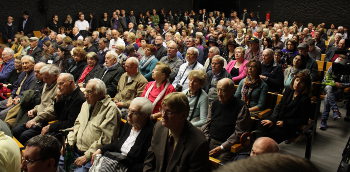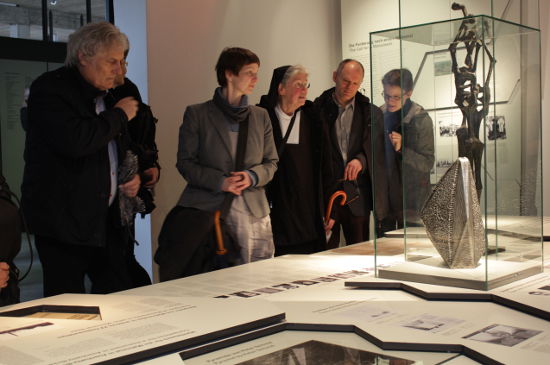Opening exhibition in the Dachau Memorial
1-st of May, 2015
Memorial of the Dachau concentration camp
Message of Pieter Dietz de Loos, President of the CID
Opening exhibition in the Dachau Memorial
1-st of May, 2015
Memorial of the Dachau concentration camp
Message of Pieter Dietz de Loos, President of the CID
Ladies and Gentlemen,

The majority of the survivals from the Dachau International Committee were political prisoners, being 2/3 of the total number of prisoners in the camp.
The biggest majority of German members of the Dachau International Committee were the political opponent's of the Nazi regime, prisoners from the beginning of the nineteen-thirty's. The political opponents from other countries were deported in the years of the War and were treated worse by the SS than the German prisoners, because they were foreigners.
The Germans considered the concentration camps as places were they fought with heroism against the Nazi regime, in parallel, the survivals from other countries considered these places as places of extreme Barbary.
When the concentration camp was transformed into a memorial, the German amicalen and the others country organizations had a different view on the past and this had consequents.
The associations members of the Dachau International Committee had to accommodate their visions in view of reaching one of their common objective: building an international monument and establish a memorial in the camp. « The first stone of the monument was in the honor of the victims mort in the period of 1933 up to 1945" and this was made by the Dachau International Committee in September 1956.
For more then ten years, Arthur Haulot, Carel Steensma, René Van der Auwera, Albert Guérisse, André Marsault and others organized a Patronats Komitee, a jury, launging a competition, collected funds, ensuring the granite, marble, cement, ensuring the work for the project. The survivals of the Dachau camp guaranteed in 1967 the serenity of the memorial with a an urn containing the ashes of unknown prisoners.
Following the competition organized by the Dachau International Committee, 63 projects were submitted in 1959. 45 Of them were exposed in Bruxelles in the Health and Family Ministry.
The German "Lagergemeinshaft" supported the project of a German architect who proposed a thirty-five meter high tower with angles, which represented the heroic resistance of the survivors and the victory over the Nazi regime.
"Lagergemeinshaften" of Belgium and France, which provided the impetus for the founding of the CID in 1955, played a dominant role within the CID officers and preferred the project of Yugoslavs Nandor GLID.
This project represents the inhumane treatment of faceless, nameless people, an inmate amount lost in the crowd as worthless animals have died.
The then CID President Dr. Albert Guérisse decided. He was even arrested and deported to Dachau because he worked for the British SOE: he chose the project by Nandor GLID and added a second sculpture: a chain and angle relief added at the foot of the international memorial.
It is observed that the green, the black and the pink triangle (the "criminal criminals", the "anti-socials" and the homosexuals) are missing.
The German political prisoners wore a red triangle, the tip down.
The International Monument of dark bronze by Nandor GLID is four feet deep, fourteen feet long and five feet four seven high. The skeleton heads hanging down, hands illustrate the barbed wire. Below the memorial, the data are engraved 1933-1945, the entire period during which the concentration camp is used by the Nazis.
But who started this in 1968 inaugurated the monument?
Nandor GLID is a Yugoslav sculptor whose entire family was wiped out. He was born in Subotica in Yugoslavia, a place that is currently in northern Serbia. His family was deported to Auschwitz and Nandor GLID sent in Szeged, in Hungary, for forced labor.
He escaped to the partisans of Tito connect, where he played an important role in a fighting against the Nazis unit. In March 1945, he was injured in Bolman in Yugoslavia.
Google Translate voor bedrijven:Translator ToolkitWebsite TranslatorGlobal Market Finder
In addition to the sculpture of the International Dachau memorial Nandor GLID has created other important monuments in Yugoslavia and Greece, in particular a completed after his death by his son Daniel Monument: this elected in 1997 by the Greek President and appointed by the central association of Jewish communities monument is located in a neighborhood of Salonika, where 96% of the Jewish population was annihilated.








